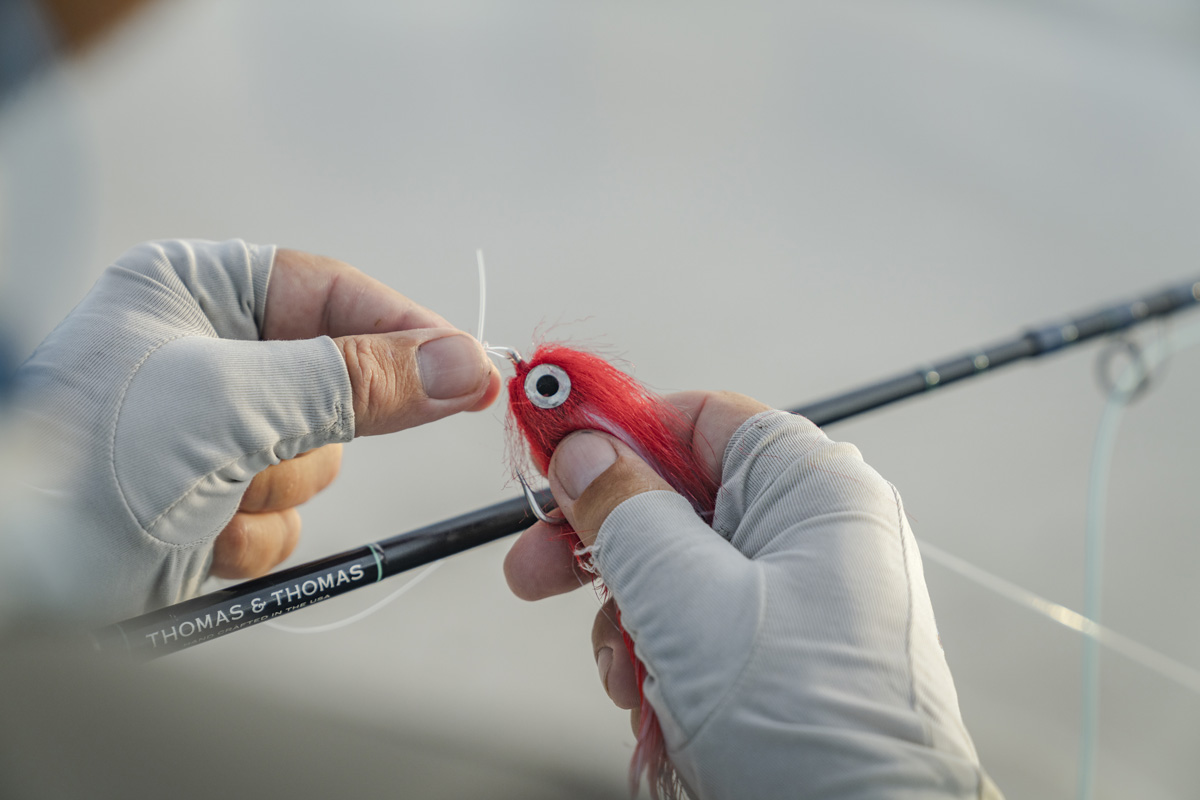Gear Review: Thomas & Thomas Sextant Fly Rod
Designing a fly rod that’s better than its predecessor is always difficult. What makes one rod “better” than another is often subjective, but there are aspects of rod design that can change the debate from Pepsi-versus-Coke and result in tangible attributes that make one rod superior to others in terms of function. The product development team at Thomas & Thomas asked us to put their new Sextant through the rigors of destination angling. I put this rod to the test in Florida, Belize, Mexico, and the Caribbean, and here’s what I have to say.
When comparing the Sextant with its predecessor, the Exocett (as well as several other comparable rods), I identified a few aspects that I consider significant upgrades.

The first time you cast the Sextant, you’ll feel that the rod is faster than the Exocett. This is because the Sextant’s midsection and butt are a bit stiffer. The supple tip on a more sturdy body allows for a fast rod to shoot line quickly at fish moving on a flat. Compared with the Exocett (and other rods), the Sextant offers the opportunity to unroll the line and present the fly very quickly. You’ll probably need to spend some time with this rod to get used to it, as the Sextant definitely has a unique feel. It can carry 30 to 50 feet of line easily which tees up my next point.
The biggest improvement of the Sextant over its predecessors, I believe, is its lifting power. One of my pet peeves is a fast-action rod that lacks the backbone to control or lift a large fish. It’s especially bad for a fish if it takes more than 20-30 minutes to land. If you’re an experienced angler, you’ll immediately notice notice how easily the Sextant handles the toughest gamefish. This is no surprise, as the decision-makers at T&T—as well as many of its advisors, ambassadors, and pro staff—are experienced anglers who are from or frequent South Africa who are used to slugging it out with hard fighting species.
One would expect he Sextant’s increased lifting power to come at a cost, however the more powerful blank of the 9-weight Sextant comes in at just under 4 ounces, slightly less than the Exocett.

Thomas & Thomas makes the most of this powerful blank by splining it.
If you’re not familiar with the term, the spline (or spine) is the slightly thicker section of a rod blank that results when the flag of carbon fiber is wrapped around the mandrel. In short, the spline is the blank’s “power sector.” Unlike many manufacturers, Thomas & Thomas splines all of their rods—that is, they wrap the rod guides in line with the spline, making the most of the blank’s inherent strength. An advanced fly caster who’s familiar with a particular rod blank can can notice a decrease in power if the rod has been wrapped off-spline. Likewise, you’ll also notice the difference when you try to lift a large fish from the depths.

The rod’s aesthetics keep with the tradition of T&T’s 50-year history. The blue blank and wraps mesh beautifully with ceramic inlays and high-grade cork handle. The double up- locking reel seat with engraved logo adds to the Sextant’s regal look.
In a word, the Sextant is the embodiment of design with a purpose: a rod made for fishing as well as casting. For not every angler will need to throw 100 feet, but at some point, every angler will need to land a sizable fish.
This is an unsolicited, unbiased review written by Joseph Ballarini, Editor-in-Chief of Tail Fly Fishing Magazine.


